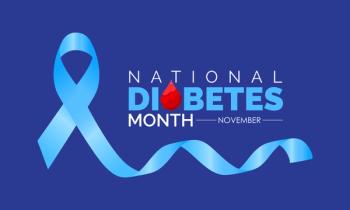
The Evolution of the PDMP
Prescription drug monitoring programs, viable resources used to combat prescription drug diversion, are gaining more national attention.
The opioid epidemic has officially been declared a national public health emergency.
Pharmacists, physicians, and all other health care associates are working diligently to restrict drug abusers’ access to opioids. Prescription drug monitoring programs (PDMPs), which are viable resources used to combat prescription drug diversion, are steadily gaining more national attention. Currently, 49 states that have functioning PDMPs, in addition to the District of Columbia and the US territory of Guam, and these programs vary from state to state. Missouri is the only state lacking a statewide PDMP, however St. Louis County has implemented its own PDMP and has welcomed other counties and cities in Missouri to join.1,2 Many wonder how these programs came to be established, what differences exists between states, and what impact these programs have had on the opioid crisis.
The first PDMP program was enacted by New York State in 1918 and was used to monitor prescriptions for cocaine, codeine, heroin, morphine, and opium. With this program, pharmacists were required to report copies of prescriptions to the health department within 24 hours. The next state’s PDMP would not be enacted for more than 20 years when California initiated its program in 1939. This enactment began the “paper era” of PDMPs, which ended in 1989 when Oklahoma became the first state requiring data to be communicated electronically. PDMPs continued to grow through the 1990s and early 2000s, with 70% of program establishments occurring in the first 15 years of the 21st century. This growth was mainly a result of the Harold Rogers Prescription Drug Monitoring Grant in 2003, which provided federal funding to states to implement and enhance PDMPs.2,3
Although similar in nature, each state’s PDMP varies by how it is administered and who is granted access. Various administration entities of PDMPs include boards of pharmacy, consumer protection agencies, departments of health, law enforcement, professional licensing groups, and substance abuse organizations. Most states give PDMP access to pharmacists and prescribers, but some allow access to groups such as Medicaid programs, state medical examiners, law enforcement and regulatory boards for investigational purposes, and research organizations.1 What drugs are being monitored in the PDMP is left to the discretion of the state. Currently, 16 states only collect data on schedules II-IV, while 35 are also collecting data on schedules V.1 A total of 46 states are participating in PMP Interconnect, which is a program that facilitates PDMP interoperability and the sharing of prescription information across state borders.4
A prominent difference among states’ PDMPs is which states render PDMP enrollment mandatory. As of April 2018, dispenser (pharmacist) enrollment is required in just 28 states, and 25 states require enrollment by both pharmacists and prescribers, Indiana, North Carolina, Oregon, and Guam mandate enrollment from pharmacists only. Currently, 14 states lack mandatory enrollment from either party.5 Mandatory enrollments from both pharmacists and physicians would be a crucial step in the advancement of PDMPs to stop drug diversion.
Other key contrasting characteristics are query requirements and the frequency of reporting to the PDMP. Just 13 states mandate pharmacists to consult the PDMP, and 12 lack requirements in regard to mandatory query of the PDMP by either pharmacists or physicians.6 Even if a state mandates query of the PDMP, pharmacists and physicians are not necessarily required to use the PDMP every time they prescribe or dispense a controlled substance. For example, in Maryland both pharmacists and physicians have query requirements, but PDMP query is only mandatory for a pharmacist when he or she has a reasonable belief that the patient is seeking drugs for uses other than treatment of existing medical conditions.7 Forty-two states require data to be collected daily, but some states stretch their requirements to 3 business days or even weekly. Oklahoma is the only state that requires data to be reported to the PDMP at the point of sale.8 With PDMP data not being updated in real time, doctor and pharmacy shopping continues to be a possibility for prescription drug abusers.
Some states such as Georgia, Louisiana, and New York allow de-identified data to be used for research purposes.9 Opportunities to evaluate PDMP data could provide an abundance of useful information on the prescribing patterns and patient consumption of opioids. Much research is already being conducted to evaluate the impact of PDMPs on morphine milligram equivalents (MME) per capita, the number of opioids prescribed, the number of opioid overdoses, and other related topics. A decline in the number of opioids prescribed was found in 80% of counties in Florida from 2010 to 2015, following the implementation of a PDMP in addition to the regulation of pain clinics in 2010. Prescription opioid-related overdose deaths also fell in the state between these years. The state of Ohio noted a decrease in MME per capita in 85% of its counties between 2010 and 2015 after requiring clinicians in the state to query the PDMP and regulating pain clinics in 2011. A similar outcome was found in Kentucky following the same implementations in 2012.10
A key contributor to PDMP documentation success is its accessibility and the opinion of its users about the program. A cross-sectional postal survey of physicians in a single state noted that 70% of respondents said that the PDMP increased their comfort when prescribing opioids, and 74% said that they found the PDMP data very useful. However, 20% of survey respondents reported difficulty with accessing the data in the PDMP.11 In a qualitative analysis that conducted interviews with individuals associated with PDMPs in 4 states, interviewers expressed their thoughts on improvements to PDMP, which included enhanced capacity for data sharing and analysis (particularly between different state PDMPs), incorporation of PDMP data into electronic medical records (EMRs), and additional training efforts.12
The PDMP Training and Technical Assistance Center acknowledges the need for PDMP improvements and has suggested several potential advancements. These improvements include authorizing more users of the PDMP, collecting and reporting data in real time, enhancing data sharing across state borders, incorporating PDMP data into health information exchanges, and standardizing states’ PDMPs.3 No state can combat drug diversion alone, which is why standardization of PDMPs and participation in PMP Interconnect from all states is crucial. Additionally, mandating that all prescribers and pharmacists enroll in PDMPs and requiring more frequent data reports would create a more unified fight against drug diversion. Integration of PDMP data into EMRs has already been shown to have tremendous benefit. The Office of the National Coordinator for Health IT partnered with the Substance Abuse and Mental Health Services Administration and launched a series of pilot programs that tested the effects of integrating Health IT and PDMPs. Feedback from pharmacists and prescribers showed that the integration prevented a disruption in their workflow and that accessing PDMP data was significantly easier.13 All these improvements suggest a promising future for PDMPs.
Doctor shopping, and using multiple pharmacies, and diverting controlled substances, especially opioids continue to increase. It is estimated that opioids are misused by about 21% to 29% of patients who have prescriptions for chronic pain.14 PDMPs have been shown to have value in decreasing drug diversion, but further research is needed to confirm the impact of these programs. As many of these programs are relatively new, several advancements are still to be made. Better interstate capabilities, integration of PDMPs with other Health IT, and real-time reporting are only the beginning. Although most of these improvements will not fall into the hands of dispensers, pharmacists can still play an active role in PDMP advancement by increasing query and reporting habits. Because pharmacists verify countless controlled substances every day, they can greatly affect drug diversion. Reviewing the PDMP prior to dispensing could become a part of regular workflow, regardless if a pharmacists’ respected state mandates PDMP query and reporting. PDMPs may not be the sole solution to the opioid crisis or other drug diversion, but they represent progress in combatting the epidemic.
This article was co-authored by Kaci Shuman, a PharmD candidate at the Harrison School of Pharmacy at Auburn University in Alabama.
References
1. Prescription Drug Monitoring Program Training and Technical Assistance Center. Prescription drug monitoring frequently asked questions (FAQ).
2. Prescription Drug Monitoring Program Training and Technical Assistance Center. History of prescription drug monitoring programs.
3. Prescription Drug Monitoring Program Training and Technical Assistance Center. History of prescription drug monitoring programs.
4. National Association of Boards of Pharmacy. NABP PMP InterConnect: the only national network of state-based PMPs.
5. Prescription Drug Monitoring Program Training and Technical Assistance Center. PDMP enrollment of prescribers and dispensers.
6. Prescription Drug Monitoring Program Training and Technical Assistance Center. PDMP mandatory query by prescribers and dispensers.
7. Prescription Drug Monitoring Program Training and Technical Assistance Center. Criteria for mandatory query of PDMP.
8. Prescription Drug Monitoring Program Training and Technical Assistance Center. PDMP data collection frequency.
9. Prescription Drug Monitoring Program Training and Technical Assistance Center. State profiles.
10. CDC. State successes.
11. Lin DH, Lucas E, Murimi IB, et al. Physician attitudes and experiences with Maryland’s prescription drug monitoring program (PDMP). Addiction. 2017;112(2):311-19.
doi: 10.1111/add.13620.
12. Rutkow L, Smith KC, Lai AY, Vernick JS, Davis CS, Alexander GC. Prescription drug monitoring program design and function: a qualitative analysis. Drug Alcohol Depend. 2017;180:395-400.
doi: 10.1016/j.drugalcdep.2017.08.040.
13. The MITRE Corp. Connecting prescribers and dispensers to PDMPs through Health IT: six pilot studies and their impact.
14. National Institute on Drug Abuse. Opioid overdose crisis.
Newsletter
Stay informed on drug updates, treatment guidelines, and pharmacy practice trends—subscribe to Pharmacy Times for weekly clinical insights.


















































































































































































































